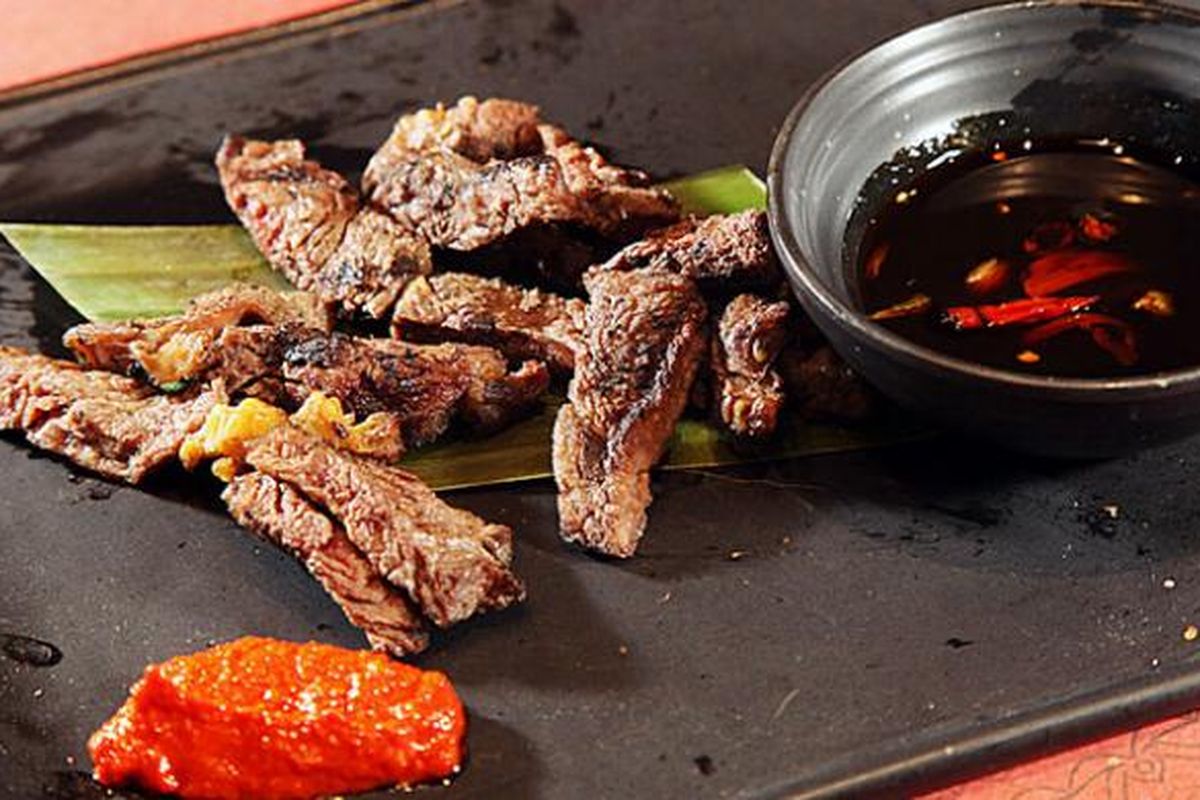The ongoing weaving of tapestries called the life of Frida Kahlo – her resoluteness, creativity. Kahlo was born in 1907, at Coyoacán, Mexico and for most of her young life she fought through a myriad of torments that greatly influenced her creativity as well as personal characteristics. Born to a German father and Mexican mother, Kahlo possessed an inherent appreciation for her colorful cultural background imbued with reverberating notes of national pride.
When she was six, Kahlo developed a case of polio that would leave her leg debilitated for the rest of her life. This encounter with physical hardship would become a prevailing subject in her art, as she tries to understand the subtleties of doing everything that can be done about her own body and knowing its restrictions. Kahlo responded as only she could… unable to move on her own, though emboldened in spirit; Kahlo poured all of herself into studying and did so well – both academically and athletically.
Kahlo’s life-altering turning point occurred on September 17, 1926 when she was horrifically mangled in a bus accident that fractured her spine and pelvis. Her painting helped her cope with the physical and emotional scars that she endured living through this traumatic time. It made her start using the canvas as a vehicle for more deeply personal, introspective explorations of experiences from her life.
Frida Kahlo: The Art and Style of a Great Artist
Frida Kahlo’s work combines a Mexican folk art style with surrealism and personal storytelling, creating an instantly identifiable visual language. With its radiant hues, elaborate imagery and stark portrayal of the artist own physical and emotional torment -(we mean that in both hemispheres of van Gogh seventeenth-century medicine respectively) – her paintings have established a colour-filled tradition.
Kahlo’s virtuosic self-portrait work is perhaps the most notable aspect of her artistic method. Over her career she created more than 50 self-portraits, employing herself as a props and costume designer to delve into different aspects of identity but also emotions, experiences. Many of these self-portraits depicted Kahlo in the traditional dress and elements that symbolized her inner world.
Kahlo was also defined by her color palette. Dipping through a rainbow like paint voluntarily smothering your pastels blue-red-yellow-black-green-pink-anywhere you wanted matched freely–clashing commercially, color emotion liquid thoughts peeked seeped into bright robust saturated the depth in mussel tin tones she bled: escaped…stood defiant as her culture pulsed only to drop ponder and plung some chroma down its chilly tingly gullet. In works like The Two Fridas, Kahlo used bold tonal shifts to show the duality of her own identity-the indigenous and Westernized embracing-and juxtapose traditional with modern aesthetics, fleshly with emotional experience.
An equally important feature of Kahlo’s and her painting style is its surrealist influence. Event though, the visual language of her paintings is realist and narrative, she used some kind of imaginary elements to illustrate this complexity in feeling. This melding of the real and imagined provided Kahlo a means to address themes such as identity, sexuality, politics and illness with an intensely personal symbolism.
Frida Kahlo through her work: on themes and symbolism
Frida Kahlo created deeply personal, intimate works that meditate upon her own experiences, emotions and selfhood. Across her work she navigated a spectrum of themes reflective of the convolutions in which she lived, encompassing everything from physical and mental health issues to political engagement and an evolving understanding of gender politics.
Kahlo’s work demonstrates a focus on physical and emotional suffering as one of the most pervasive themes. “Two Fridas,” which depicts her younger and older selves holding hands, is widely interpreted to depict Kahlo’s anticipated divorce from Rivera around the time of this painful painting. She used those works to face of what her body endures and also of a woman, declaring even in the most unpleasant situations their control over own lives.
In addition, Kahlo’s art was an ardent expression of her Mexicanidad and her allegiance to social justice. She used this subject in works like My Dress Hangs There and Self-Portrait on the Board Line Between Mexico And The United States to delve into her mixed cultural background, and how it intersects with their individual experiences. Her art worked as a means for her to express political activism, where she commented on social injustices by creating works condemning the rise of imperialism and exploitation in Mexico.
An important subject in Kahlo’s piece of art was researching gender and sexuality. Paintings such as Two Nudes in a Forest and The Suicide of Dorothy Hale offered challenges to conventional ideas about idealized femininity-and also the conservative sexual norms of her day-while Kahlo regularly utilized her art for both personal assertion from autonomy. Her self-portraits, in many cases, acted as a form of autoethnography-records of her identity and efforts to take back the body; acts that used it for strength or resistance.
The Influence of Frida Kahlo on Mexican Culture and Identity
Frida Kahlo’s art and life made an indelible mark on Mexican culture, emerging as a symbol of national pride and indigenous cultural continuity. Kahlo was a Mexican artist who openly shared her indigenous roots and uninhibited symbolism of the vibrancy of Mexican culture, as well as sentiments that struck moral cords with her compatriots to build Mexico’s artistic fabric.
A main way that Kahlo’s art impacted Mexican culture was how she drew on long-standing Mexican symbols and other traditional motifs. Through her use of powerful colors, complex motifs and indigenous hieroglyphs she promoted Mexican folk art to the newly formed classical Western artistic traditions that significantly influenced global audience.
Kahlo’s art was also a forceful articulation of Mexican identity and opposition. Her paintings often showed scenes of Mexican life, from the crowded markets in Mexico City to green countryside. Through the centrality and celebration of these images, Kahlo’s art was deployed as a vehicle through which to claim cultural sovereignty for the country on one hand, whilst simultaneously operating in subtle resistance against forces of globalization that sought – and still seek!
But her personal life and political activism were so bound up with the work she produced, that Kahlo had become an iconic figure in popular culture. Her marriage to the artist Diego Rivera, her involvement in left-wing politics movements that often embraced class struggle more than race and gender issues, and her fierce independence as an unflinchingly Mexican artist who supported rights for indigenous Mexicans are all part of what shaped this perception.
Today, the gift of Frida Kahlo lives on in Mexico and much beyond to motivate yet another generation of artists, activists and cultural lovers as they press forward as proud keepers-of-the-flame for their own freedom from any imposed standards – teaching others that these too are universal imperatives.
The Life & Times of Frida Kahlo
The art of Frida Kahlo resonates with universal themes and is deeply connected to her personal struggles in life. A sad life marked by physical and emotional pain from childhood would become the fire that fueled her art.
Kahlo contracted polio as a child which lead to her having one leg shorter and thinner than the other, this physical disability was a prominent theme throughout Kahlos art. She was also crippled when a bus crashed later that year and she could never walk properly due to the severe damage in her spine, pelvis, kneecaps. The art of Kahlo was how she dealt with the pain and limitations that her body imposed upon herself, forcing her to paint a way out from beneath its own toxicity.
Tumultuous was an understatement when it came to Kahlo’s personal life too, especially with her roller-coaster-like marriage to fellow artist Diego Rivera. Kahlo and Rivera’s relationship was built on infidelity, jealousies… incredible sorrow at times but ultimately it is one of the most deeply passionate love stories that you often find expressed in Kahlo’s art.
In works like The Two Fridas (fig. 12) and What the Water Gave Me, Kahlo compellingly evoked how both facets of who she was – human being on one hand, personal flesh-and-blood figure on the other-along with her life experiences as a woman had influenced her artistic perspective; so much that some concluded there existed in those canvases an equation or harmony quite unique to any work before.
In addition to the physical and emotional barriers, Kahlo’s life was further defined by her political activism and dedication to social justice. An outspoken backer of left-wing causes, including the Mexican Revolution and labor movements. As a result, her work became an affirmation of the same populist left causes she endorsed in public pronouncements on imperialism, class and struggle under repressive regimes.
From the beginning to end of her life, Kahlo’s indefatigability in confronting adversity was really extraordinary. She never lost faith in her own brush or vision regardless the obstacles she was facing and continued to pursue art as means of self-expression. Kahlo’s haunting art of transforming experienced sorrows into iconoclastic work has left a strong impact on the 20th century and positioned her as an important influence in the history of cultural heritage.
Contemporary Influences: The Legacy of Frida Kahlo in Modern Art
The continued influence of Frida Kahlo on contemporary art cannot be exaggerated. Her singular artistic perspective, resolute determination to paint by her own lights and searing depiction of the human condition have touched millions around the world – inspiring artists across several generations.
The legacy of Kahlo has been a significant one in contemporary art, however, and some see its influence whenever an artist is motivated to create self-portraits. All kinds of artists since have been similarly emboldened by Kahlo’s boisterous but honest portrayal, infusing their portraits with even deeper musings on identity, gender and the myriad possibilities inherent to being human.
Kahlo’s art has deeply impacted the evolution of contemporary artists working on issues surrounding political and social justice. Because she is so open in her use of art to express political opinions and defend marginalized communities, this has drawn young artists into using their works as a stage for social and politican movements.
Kahlo’s influence, furthermore, is apparent in the use of bright colors and distinct symbolism – plus the surrealist streak evident throughout some contemporary artists. Her distinct style of art has surfaced as a muse for many artists who aspire to break free from and experiment outside the box set by traditional artistic norms.
Outside the art world, Frida Kahlo’s influence has emerged as an icon of strength, survival and a celebration of differences. From fashion and home decor, to movies and tv shows Kahlo’s image is everywhere these days as a new generation finds itself captivated by her life.
While we pass on the legacy of Frida Kahlo, it is evident that her influence absorbed effect millions for decades. Her art, her life and that indomitable spirit have inspired artists, activists and ordinary folks the world over for what it says about creation, resilience – just being able to say who you are.
Frida Kahlo Exhibits and Museums
Frida Kahlo has a lasting legacy and this is evident in the various exhibits and museums set up to keep her history alive. With a growing network of dedicated spaces, these hubs are the places to study Kahlo’s art and experiences across her artistic career.
Easily one of the best-known Frida Kahlo attractions is The Frida Kahlo Museum, more commonly referred to as “The Blue House” in Coyoacán, Mexico The museum, Kahlo’s former residence & current home, contains her personal items and is now displaying a substantial collection of art as well.
Perhaps the most notable collection of Kahlo’s work is “Frida Kahlo: Appearances Can Be Deceiving,” which has toured major art museums throughout global locations, including New York Citys Brooklyn Museum and Londons V&A. The exhibition examines how Kahlo used the language of dress to fashion a visual statement reflecting her cultural and political beliefs by asserting that identity is evidence of an individual’s personal power.
Frida Kahlo Gallery spaces have been dedicated to the exhibition of latoto, and she has participated in solo and group shows both in Mexico and internationally. These exhibitions added to her reputation as one of the most important and original artists in the 20th century, attracting new generations of fans and scholars eager to experience firsthand the richness and profundity that characterize everything she did.
The emergence of Frida Kahlo-focused exhibitions and museums are a reflection of the longevity her art holds, as well as on its impact over so many years in physical spaces. While the explorer in their life and times can help visitors find a connection to Kahlo’s very personal artistic vision, these place serve as hubs for that discovery of her legacy.
Frida Kahlo Popular Culture – FUNDAFRIDA
Frida Kahlo has also become a product in our consumer society, her image and art often appear outside the boundaries of international museums. Kahlo has an incredibly active afterlife: For years, the face that could only be framed by dark eyebrows and a colorful flower crown became so popular in fashion, home decor (she graces everything from mugs to towels), TV shows or even movies. The relentless use of Kahlo as image appears evidence for her work’s extremely long-lasting influence on societal ideas about womanhood.
Probably the most noted form of commodification concerning Frida Kahlo is with commodity fetishism, which we have become familiar with since just about anything can be bought and sold through merchandise. Kahlo’s unique appearance, bold colour schemes and symbolic art have adorned everything from T-shirts to mugs to posters., as well as high-fashion -. The commercial items emblazoned with her likeness have only expanded the reach of Frida Kahlo as cultural icon, introducing a wider audience to both her art and image.
Aside from the commodification of Kahlo, her life and cultural impact have also been explored in a variety of films, television shows, documentaries and other media. Frida Kahlo’s story has been brought to the screen in multiple ways from Salma Hayek starring as her, horns and unibrow intact, in the 2002 biopic that earned swaths of critical acclaim; to a Netflix series Museo de la Soledad which delves into how both Fridas have played roles for Mexican culture at large.
Furthermore, the legacy of Frida Kahlo lives on in how her approach to art and subject matter have seeped into contemporary dimensions such as modern arts, fashion design and even consumer products. Her creative legacy lives on throughout Kahlo-inspired contemporary art installations, to the vibrantly surrealtextiled designs of celebrated fashion houses; her iconography and craft have further inspired a legion or artists + designers across countless disciplines.
The widespread use of Frida Kahlo’s image and the continued interest in her work and life are evidence that she continues to resonate strongly with a larger culture. Kahlo wrote and painted her life in a way that monumentally adorns itself with resilience, creativity, and cultural identity; paving the way for millions of others on their solo journeys down wistful roads full irretrievable memories-and proving to history time yes 100 more.
Frida Kahlo: An Inspiration for all Ages.
As Frida Kahlo’s art is one of the most mysterious we have seen, and as she too was so enigmatic both in life and death. Kahlo’s deeply personal and politically charged paintings have touched a chord in the art world, ultimately defying every standard dictum of an artist to proclaim that only one whose voice is wholly individual can make convincingly powerful art.
Kahlo’s vivid paintings, filled with coded symbolism and a disarming candor about the human experience work has made her an enduring muse stretching across generations from edgy teenagers to serious artsy fartsies. In the grand tradition of art history, her relentless pursuit of self-actualization mirrored by a steadfastly experimental approach to identity (gender included), political agency and activism have rendered Barreto – against all odds – an icon for radical resilience rejoiced in ink.
Indeed, Frida’s legacy in the broader sense of popular culture and social activism is unassailable; her image, story and persona are imbued with power beyond art itself -not merely as a symbol of strength but symbolic also for authenticity; celebration of difference. Kahlo has become such a symbol in fashion, home decor and even on screen that it is clear that her art continues to resonate as much today as when she created them all those years ago.
As we still remember and celebrate the life of artist Frida Kahlo, it is undeniable that her legacy will live on for many more generations to come. Her art, her life and the grand indomitable spirit that drove through these have inspired artists, resistance fighters or just common people throughout the world to grasp for creativity in order to overcome suffering here on Earth. Frida Kahlo has left behind an immense legacy which is only proof to the enduring power of human spirit and her lasting effect on both art world, as well as outside of it, constantly inspiring new generations.
Also read: Creed Aventus: The Legend of Fruity and Woody Fragrance



